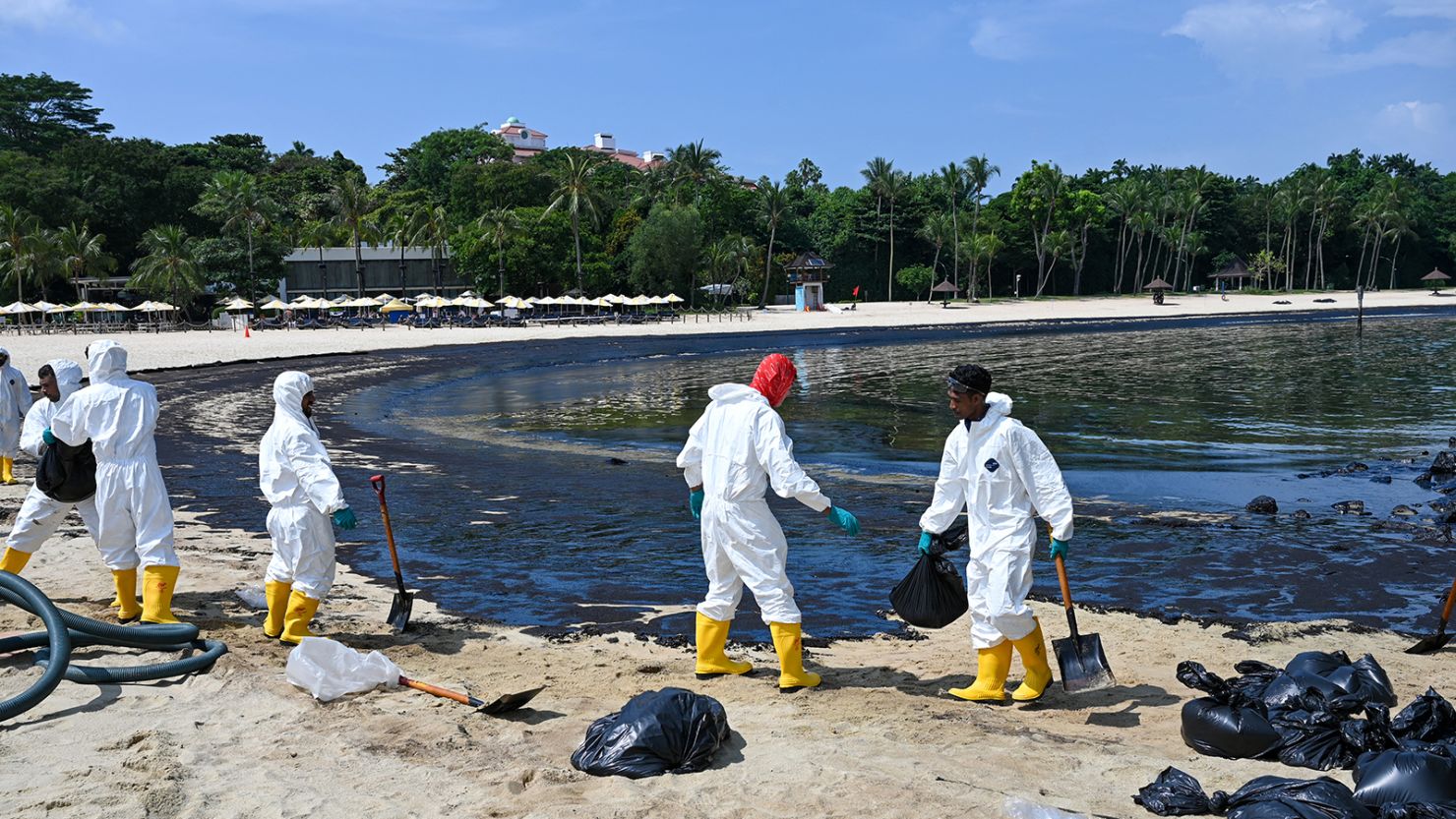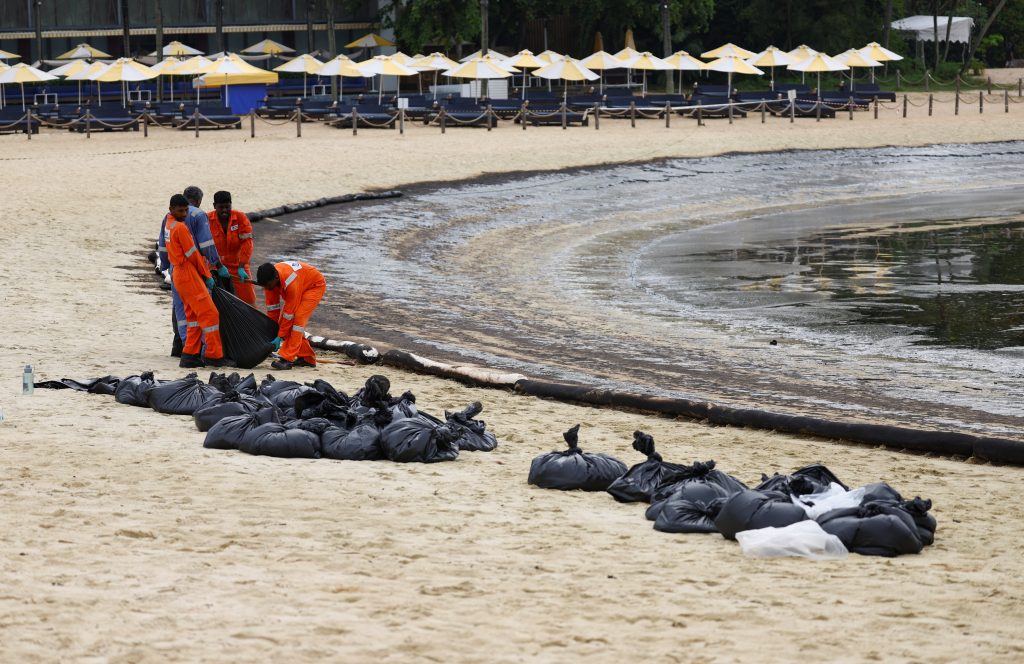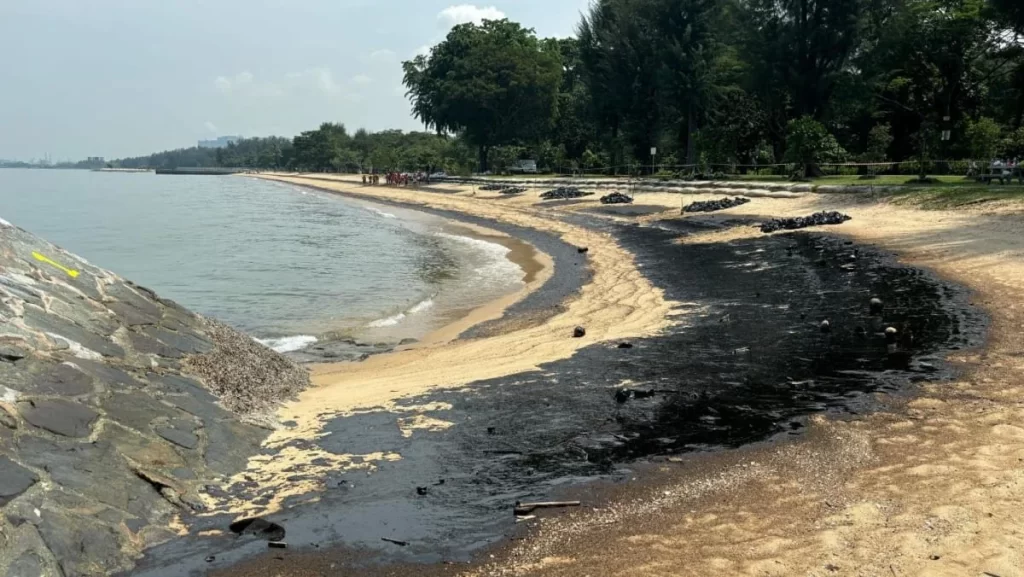
The clean-up of the oil spill affecting parts of Singapore’s shores on Sentosa and the mainland resumed on Sunday (Jun 16). At Tanjong Beach on Sentosa, an oil spill response company contracted by Sentosa Development Corporation restarted efforts to remove oil from the shoreline at first light.
Despite the extensive containment and clean-up measures, black oil slicks and the stench of petrochemicals persist at the beachfronts of Sentosa and East Coast Park, two days after the incident. The spill occurred when dredger Vox Maxima collided with the stationary bunker vessel Marine Honour at Pasir Panjang Terminal, causing oil to leak from a damaged cargo tank into the water.

The oil has since spread to various coastlines, prompting beach closures at St John’s, Lazarus, and Kusu islands, along with sections B to H of East Coast Park and the jetty and rocky shore of Labrador Nature Reserve. While Sentosa’s beaches remain open, swimming and sea activities are temporarily banned at Tanjong, Palawan, and Siloso beaches.

Authorities have deployed nearly 1,500 meters of containment booms at key locations to prevent further oil spread, with an additional 1,600 meters of booms scheduled to be deployed in the coming days. The Singapore Food Agency (SFA) has assured the public that local fish remain safe for consumption and that there is a low risk of the oil spill spreading to the Johor Straits, where local fish farms are located.
Environmental groups and local authorities continue to monitor the situation closely. Conservationists have raised concerns about the potential long-term impact on marine wildlife, as reports of affected animals, including kingfishers and otters, have surfaced.
The Maritime and Port Authority (MPA) is collaborating with British Marine, the insurer of the stationary tanker, to facilitate third-party claims for those impacted by the spill.
For further updates and detailed information, stay tuned to official announcements from the SFA, MPA, and local conservation organizations.




